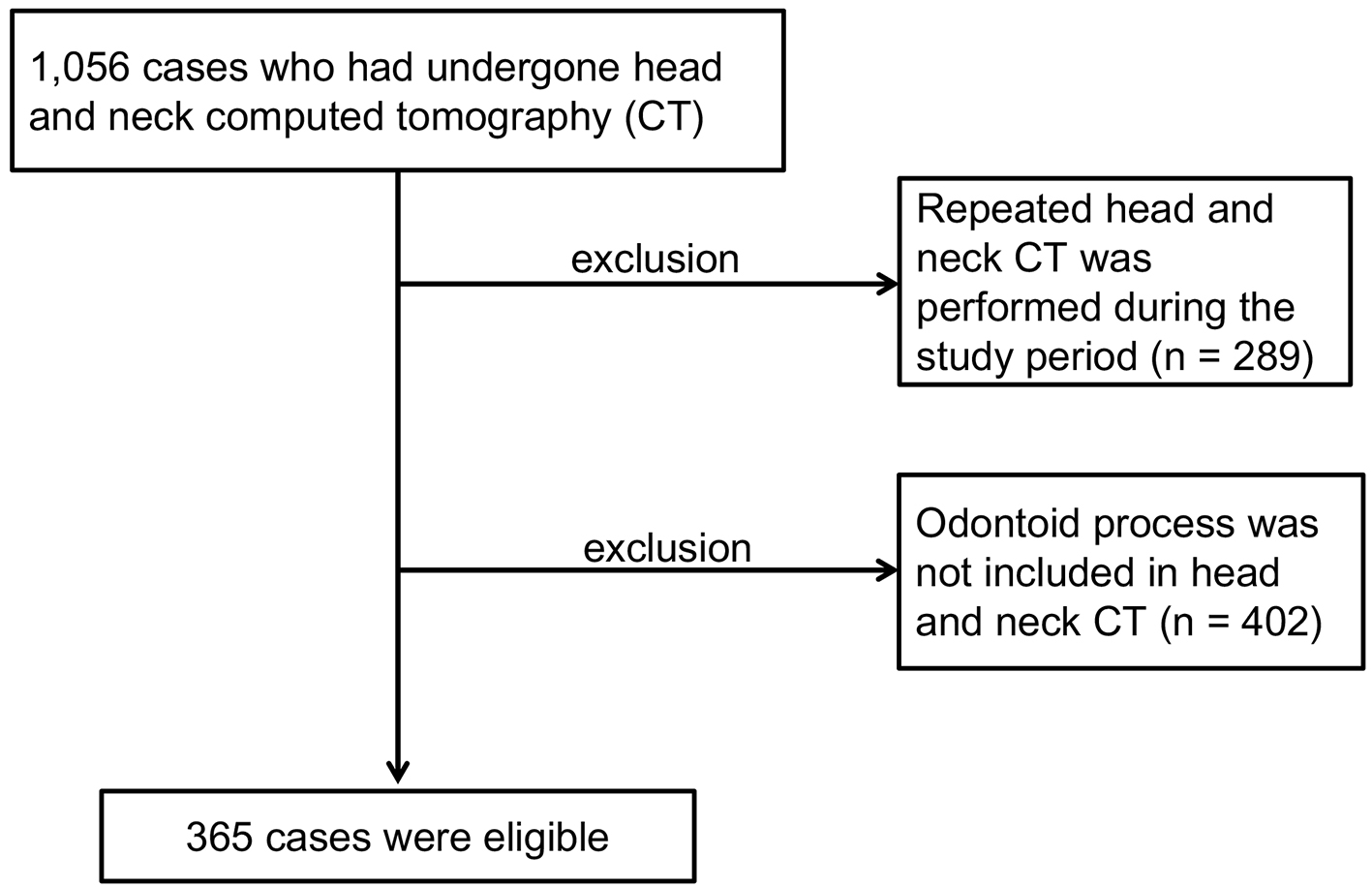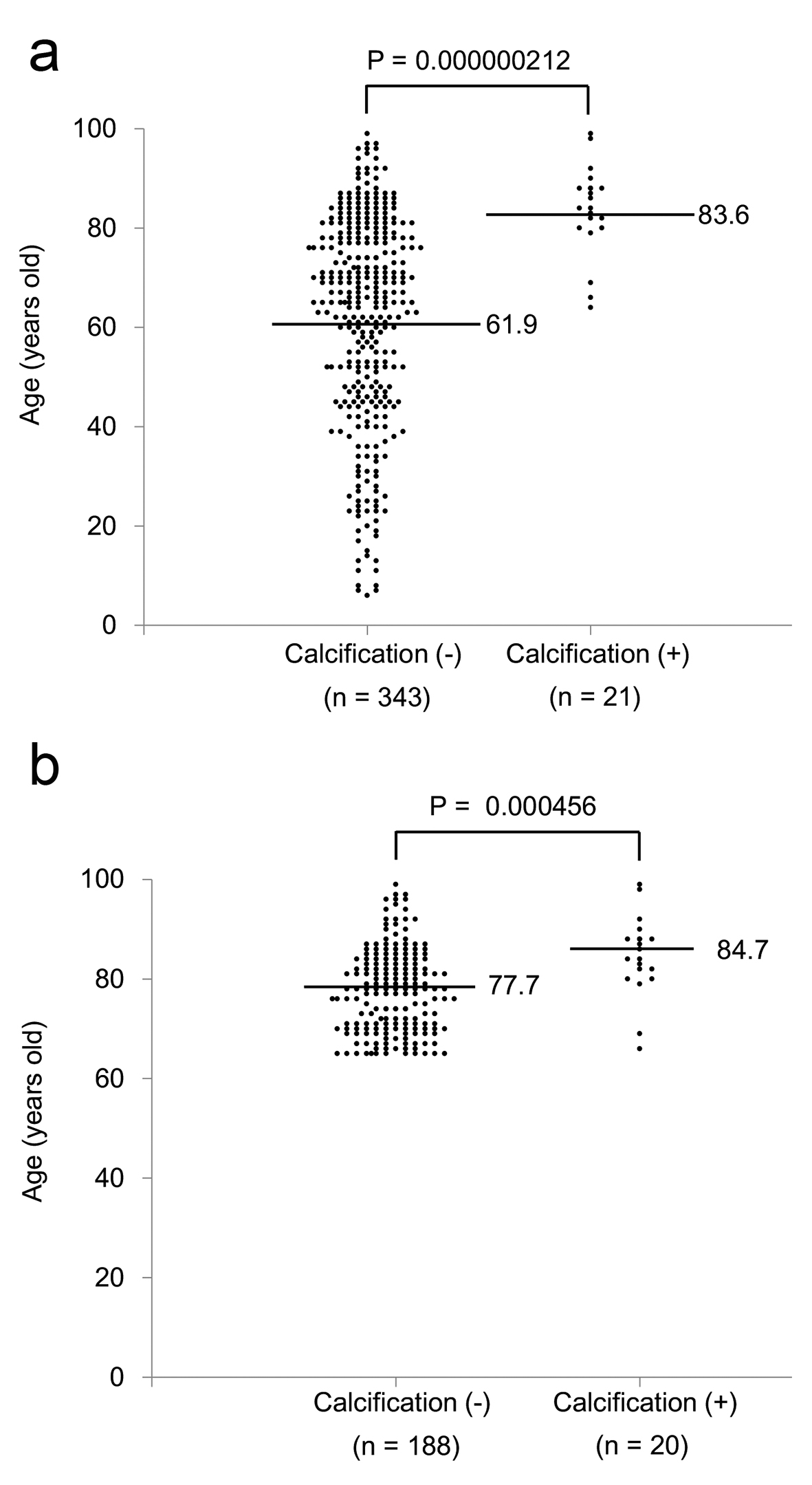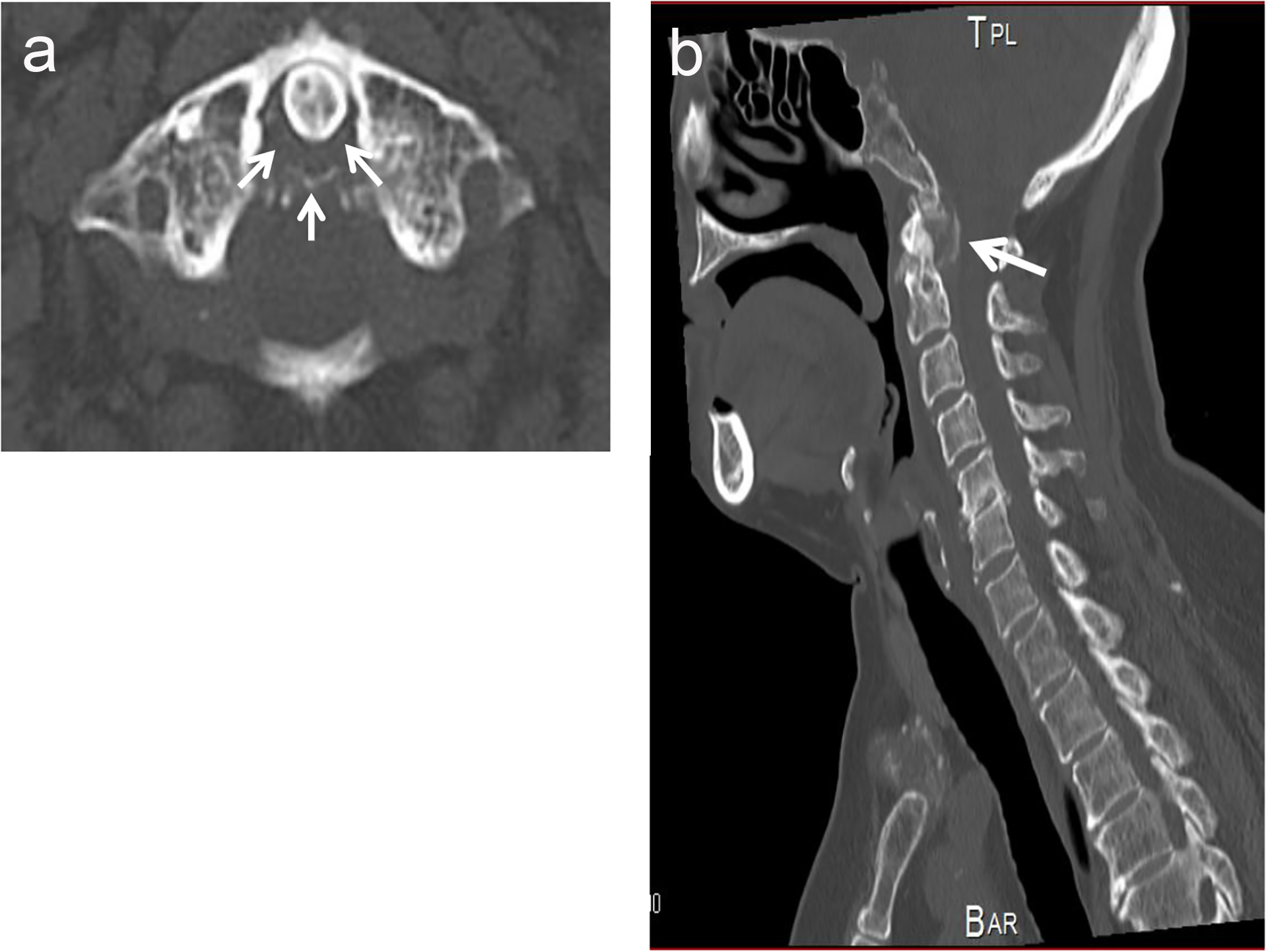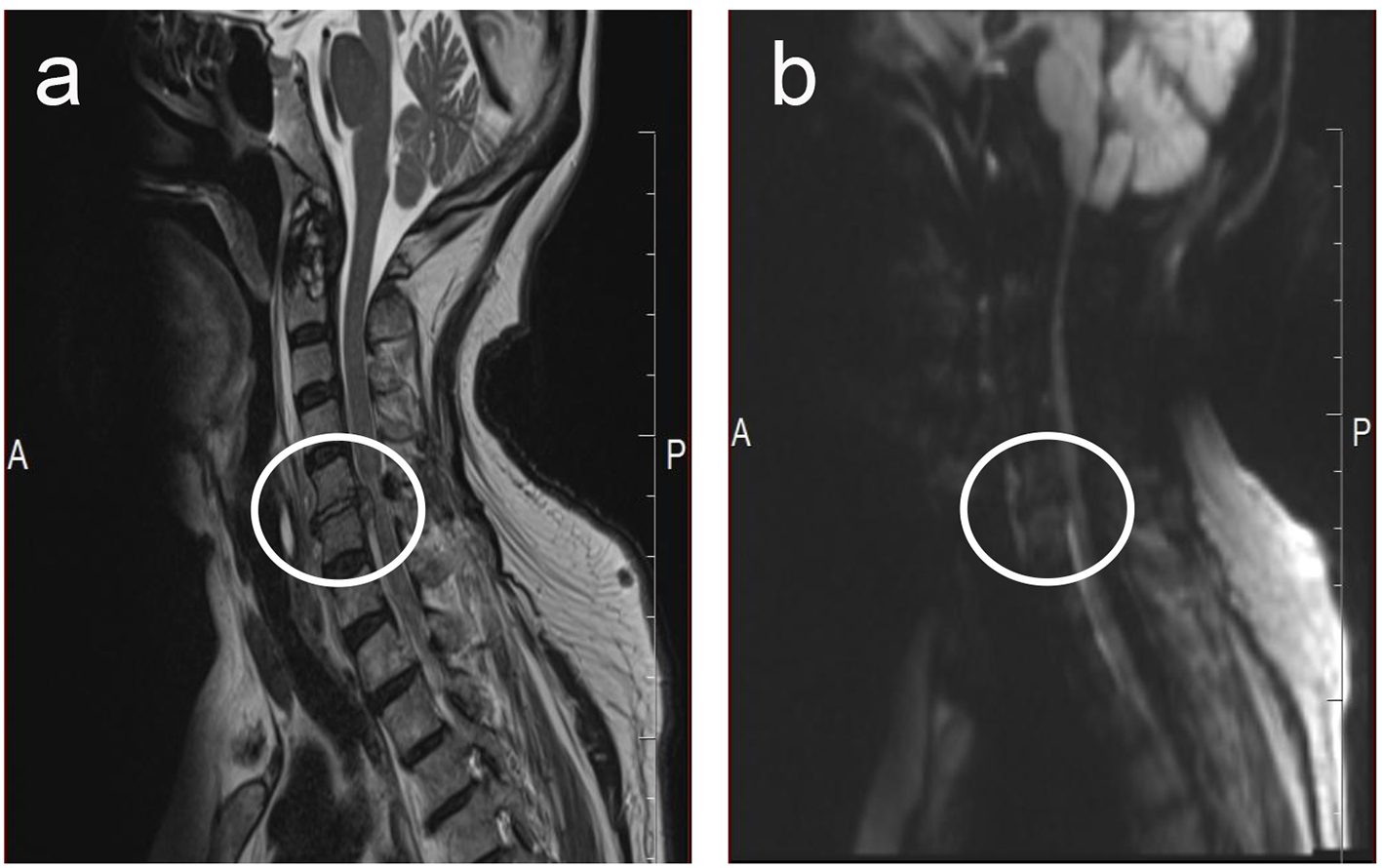| 1 | 85/F | Neck pain, restricted neck rotation | 37.9 | 0.57 → 1.57 (day 3) → 0.22 (day 7) | Celecoxib 400 mg/day | Symptoms and fever were promptly ameliorated on day 2 |
| 2 | 79/F | Neck pain, restricted neck rotation, polyarthralgia | 38.0 | 23.91→ 10.01 (day 2) → 1.25 (day 7) | Celecoxib 400 mg/day, PSL 10 mg/day | Symptoms were ameliorated on day 2, and fever was gone on day 5 |
| 3 | 69/M | Neck pain, restricted neck rotation | 37.6 | 4.63 → 0.91 (day 4) → 0.35 (day 6) | PSL 15 mg/day | Symptoms and fever were promptly ameliorated on day 2 |
| 4 | 92/F | Neck pain, restricted neck rotation | 37.5 | 9.72 → 3.85 (day 2) → 0.36 (day 6) | Celecoxib 400 mg/day | Symptoms were gradually ameliorated, and fever was gone on day 3 |
| 5 | 85/F | Neck pain, restricted neck rotation | 38.4 | 14.33 → 5.88 (day 5) → 4.21 (day 7) | No medication | Symptoms were promptly ameliorated on day 1, and fever was gone on day 2 |
| 6 | 87/F | Neck pain, restricted neck rotation | 38.1 | 5.99 → 1.38 (day 4) → 0.37 (day 7) | Celecoxib 400 mg/day | Symptoms were promptly ameliorated on day 1, and fever was gone on day 2 |
| 7 | 85/M | Neck pain, restricted neck rotation | 37.5 | 11.14 → 6.45 (day 4) → 6.05 (day 9) | Sulindac 200 mg/day → loxoprofen180 mg/day (from day 4) | Symptoms were promptly ameliorated on day 2, and fever was gone on day 3 |
| 8 | 84/M | Neck pain, restricted neck rotation | 37.4 | 14.06 → 8.36 (day 2) → 1.10 (day 7) | Celecoxib 400 mg/day | Symptoms were promptly ameliorated on day 1, and fever was gone on day 2 |
| 9 | 82/M | Neck pain, restricted neck rotation, polyarthralgia | 39.2 | 12.45 → 7.42 (day 2) → 0.52 (day 4) | PSL 30 mg | Symptoms were promptly ameliorated on day 1, and fever was gone on day 2 |
| 10 | 79/F | Neck pain, restricted neck rotation | 38.3 | 14.30 → 16.41 (day 1) | Celecoxib 400 mg/day | Any amelioration in symptoms and fever were not observed on day 2 |




